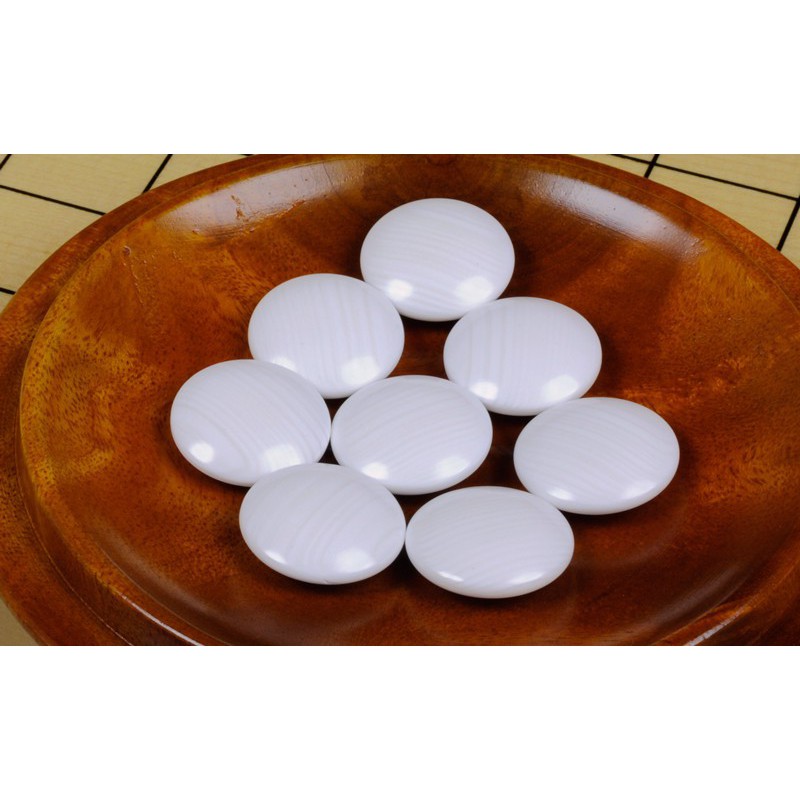
I'll try to find out more about the waxes used on kaya and katsura - and whatever is used on the spruce boards. I do mean to use the flat boards - ones with no feet or removable pads only - and ones with good bottom sides. See the links on Go Board for pictures of various stages of traditional kaya go board making, including applying the wax finish. They almost all have a pyramidal inset ( Heso) cut in the center of the bottom side. When you speak of putting something on the reverse side of a go board I assume you are not talking about the boards with legs. Katsura boards also have only a wax finish, but I think it is a different kind of wax, harder and very difficult to rub off (which you shouldn't do anyhow). I don't know anything about the finish on spruce boards. Shin Kaya is spruce wood and is finished differently from kaya. Gregīob McGuigan: I'm not an expert but here's what I know. After finishing, I want to get the wood back to the original condition. This will involve some cutting and carving into the surface of the wood. ? I intend to buy some go boards here in Japan and refinish the reverse side to make a hex board (isseki ni cho). Greg Conquest ?: Can anyone tell me about the finishes that are used on the standard commercial boards made in Japan? I mean, do all kaya boards have the same finish? Shin Kaya is the same or different, and Katsura. One glitch in a line and the board is ruined. Lee Hung Lo: Whatever method you use, it had better result in straight lines. Karl Knechtel: You might also do ordinary woodburning for the lines, either with a proper kit or perhaps even a soldering iron. Made very nice lines, may be a bit pricey though. You set the design on a computer and the laser burns to whatever depth you desire. Tyler: While my father was making a board he ran into someone who owned a laser for burning designs into wood. Protognsis ?: Is there a particular reason why the lines cannot be inlaid? I used an awl to mar the wood, and I plan to put ink in the grooves tomorrow. Once that is dry, I apply a liberal coating of beeswax polish, which provides a hard and durable finish with an attractive low-glare sheen. I find it very effective to mark the lines using water-based black ink, then to apply a layer of acrylic matt varnish.

I have made a few gobans in the last year or so. Velobici: Katsura slotted go boards from Ishi Press shipped with a white powder wax applied to the surface of the board. Make sure that your surface treatment does not dissolve or ruin the lines, so test it on your wood scrap. Using a matte varnish will give you the chance to 'correct' the wood colour and may be desirable. Waterbased polyurethanes work well and dry quickly, but you can use lacquer, varnish, oil, wax, or any other wood finish, so long as you can see the lines clearly. Gobans should be matte, to reduce glare under various lighting conditions, and the finish should be hard and durable. Take care in choosing what type, if any, of varnish or other finish you use.

It may work to apply one coat of clear finish to the wood before applying the lines, then apply the final coat(s) of finish. To ensure that the ink or paint does not soak into the woodgrain, leaving fuzzy lines, test the ink or paint on a scrap of the wood you are using for the board. The advantage of the latter is that you will get a very even colour and that you can adjust the line width.

This can be done with a fountain pen, Bic pen, overhead marker, Sharpie, or drafting pen. The thing to remember is that the lines should be straight, and in a colour sufficiently rich to make them easy to see. Of course, this is a bit awkward if you're doing it in your garage. Thereafter, a very thin layer of oil is added to the board. The goban is then left to dry and the process is repeated several times until the desired richness of colour has been achieved. Traditionally, a Katana (Japanese sword) is dipped in ink and gently rocked back and forth to deposit a straight, thin line. One of the most difficult tasks when making a goban is to put the lines on it, and to make sure they stay there.


 0 kommentar(er)
0 kommentar(er)
